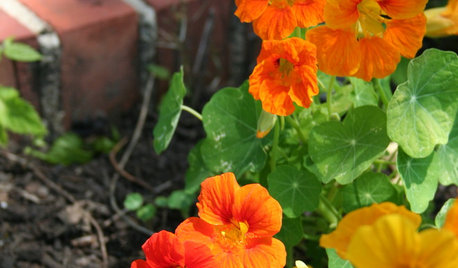Seramas, I wasn't able to post a reply
gardengalrn
15 years ago
Related Stories

FUN HOUZZEverything I Need to Know About Decorating I Learned from Downton Abbey
Mind your manors with these 10 decorating tips from the PBS series, returning on January 5
Full Story
LIFEHouzz Call: Who'll Post the First Snow Photo of 2013?
If the weather's been flaky in your neck of the woods, please show us — and share how you stay warm at home
Full Story
SMALL KITCHENS10 Things You Didn't Think Would Fit in a Small Kitchen
Don't assume you have to do without those windows, that island, a home office space, your prized collections or an eat-in nook
Full Story
GARDENING GUIDESDon’t Let These Excuses Keep You From Gardening
Stop blaming your lack of experience, space, time and funds, and get on with the joy of garden making
Full Story
HOUSEKEEPINGDon't Touch Another Stain Before You Read This
Even an innocent swipe with water may cause permanent damage. Here's what to know about how rugs and fabrics react
Full Story
MOST POPULARThe 100-Square-Foot Kitchen: A Former Bedroom Gets Cooking
DIY skill helps create a modern kitchen where there wasn’t one before
Full Story
PETS5 Finishes Pets and Kids Can’t Destroy — and 5 to Avoid
Save your sanity and your decorating budget by choosing materials and surfaces that can stand up to abuse
Full Story
LIFEYou Said It: ‘It’s Different ... But Then, Aren’t You?’ and More Wisdom
Highlights from the week include celebrating individuality and cutting ourselves some decorating slack
Full Story
MOST POPULARThe Polite House: On ‘No Shoes’ Rules and Breaking Up With Contractors
Emily Post’s great-great-granddaughter gives us advice on no-shoes policies and how to graciously decline a contractor’s bid
Full Story
DECLUTTERINGDecluttering — Don't Let Fear Hold You Back
Sure, you might make a mistake when tackling a decluttering project, but that's OK. Here's why
Full Story





seramas
jenica
Related Professionals
Glendora Landscape Architects & Landscape Designers · Willowick Landscape Architects & Landscape Designers · Wixom Landscape Architects & Landscape Designers · Beverly Hills Landscape Contractors · Mason Landscape Contractors · Fairmount Fence Contractors · Meridian Fence Contractors · Salt Lake City Fence Contractors · Bonita Decks, Patios & Outdoor Enclosures · Braintree Decks, Patios & Outdoor Enclosures · Centreville Decks, Patios & Outdoor Enclosures · Hobart Decks, Patios & Outdoor Enclosures · Spanaway Decks, Patios & Outdoor Enclosures · Westford Decks, Patios & Outdoor Enclosures · Truckee Decks, Patios & Outdoor Enclosuresseramas
jenica
seramas
highdesertwoman
brendan_of_bonsai
msjay2u
brendan_of_bonsai
islandmanmitch
brendan_of_bonsai
msjay2u